History of Turkey
The history of the Turks covers a time frame of more than 4000 years. Turks first lived in Central Asia around 2000 BC. Later, some of them left Central Asia and spread around, establishing many states and empires independent from each other within a vast area of Asia and Europe. These empires included The Great Hun Empire (established during the 3rd Century B.C.), the Göktürk Empire (552- 740), the Uygur Empire (741- 840), the Avar Empire (6-9 Century A.D.), the Hazar Empire (5-10 Century A.D), the Great Seljuk Empire (1040- 1157), and many others.
Turks in Anatolia: The Turks started to settle in Anatolia in the early 11th century by way of continual migrations and incursions. The Malazgirt victory in 1071 against the Byzantines literally opened up the gates of Anatolia to the Turks. It is following this date that the Turks fully conquered the whole of Anatolia and established the Anatolian Seljuk State there (1080-1308).This was the first Turkish State in Anatolia and was sometimes called, after its capital city of many years, the Konya Sultanate.
OTTOMAN AGE 1299–1923: The Seljuk State rapidly declined with the Mongol invasion of Anatolia which started in 1243. During the period of the decline of the Anatolian Seljuk state and after its disappearance, many Turcoman principalities were established in Anatolia towards the end of the thirteenth century. One of these was the Ottoman (in Turkish Osmanli) Beylik (similar to a Principality) named after its founder, a Turkish ruler named Osman in 1299 in the environs of Söğüt in Eskişehir in the northwestern corner of the peninsula. The Ottoman Beylik rapidly expanded throughout the fourteenth century and thus arose the Ottoman Empire, which ruled over a vast territory on three continents and lasted for 623 years until the end of the First World War.
The Ottomans captured Constantinople in 1453, during the reign of Sultan Mehmet II (1451-1481), and the Byzantine Empire fell, which also marked the end of the Middle Ages and the beginning of the New Age. During the reign of Sultan Mehmet II, who assumed the title of "The Conqueror," the Ottoman state entered into an era of rapid development which would last until the end of the sixteenth century. At its height, the Ottomans ruled over what is today Greece, Bulgaria, Yugoslavia, Albania and Romania in the Balkans, over all the islands in the Eastern Mediterranean, and over what is today the Middle East. The borders of the Empire extended from the Crimea in the North to Yemen and Sudan in the South and from Iran and the Caspian Sea in the East to Vienna in the Northwest and Spain in the Southwest.
Starting in the 16th century, however, the Ottoman Empire incrementally lost its economic and military superiority in comparison to Europe, which had developed rapidly with the Renaissance, with its conquest of new territories and its access to raw materials, and with the Industrial Revolution. The Ottoman Empire failed to adapt to these new developments. Thus, the balance of power shifted in favor of the European States. The nationalist movements that started in the nineteenth century and the self-determination movements and rebellions of the Balkan nations, supported by the European powers and Russia, slowly brought the Ottoman Empire to a decline.
WORLD WAR I 1914 –1918: The weakening of the Empire continued until World War I. The Ottoman Empire entered the First World War in 1914 on the side of the allied powers and emerged defeated from the war in 1918, compelled to sign the Mondros Armistice on October 30, 1918. Under the terms of this Armistice, the territories of the Ottoman Empire were occupied by Britain, France, Russia, and Greece. This was the actual end of the Ottoman Empire.
A national resistance and liberation movement emerged as a reaction to this occupation under the leadership of Mustafa Kemal, an Ottoman military commander who mobilized Anatolia in a quest for Turkish self-determination and national independence. He united sporadic and disorganized resistance groups in Anatolia and organized them into a structured army. Under the leadership of Mustafa Kemal—later given the last name Ataturk or "Father of Turks"—the resistance became cohesive, and the Turks were capable of fighting the war for national liberation.
The Turkish National Liberation War was an effort to create a new state from the ruins of an Empire, which had completed its life. It lasted four years (1919-1922) wherein a small army of volunteers fought and won a war against the leading powers of this time. Ataturk's victory was not only military, but it was also diplomatic. The Turkish military victory was sealed with a diplomatic success with the signing of the Lausanne Peace Treaty on July 24, 1923. Signed with Great Britain, France, Greece, Italy and others, the Treaty recognized the creation and international borders of a Turkish State and guaranteed its complete independence.
REPUBLIC OF TURKEY: The Republic was proclaimed on October 29, 1923. For the first time in centuries, the Turkish people enjoyed self-rule. Mustafa Kemal was elected as the first president of the Republic of Turkey.
As president for 15 years, until his death in 1938, Mustafa Kemal Atatürk introduced a broad range of reforms in the political, social, legal, economic, and cultural spheres that were virtually unparalleled in any other country.
The first Grand National Assembly under the leadership of Ataturk created a new political and legal system based on the principles of parliamentary democracy, human rights, national sovereignty and division of powers, private ownership and secularism, and the separation of religion and state affairs. A new, secular education system was established, the Arabic alphabet was changed into the Latin alphabet, and new civil and criminal codes were adapted from European models. Turkish women received equal rights under the law such as the right to vote and be elected to public office, which put Turkey ahead of many Western nations in terms of women's rights. It was a revolution, unparalleled at its time and even today, to bring a predominantly Muslim nation in line with Western civilization and universal values.
Location of Turkey: southeastern Europe and southwestern Asia (that portion of Turkey west of the Bosporus is geographically part of Europe), bordering the Black Sea, between Bulgaria and Georgia, and bordering the Aegean Sea and the Mediterranean Sea, between Greece and Syria
Capital: Ankara
Climate: temperate; hot, dry summers with mild, wet winters; harsher in interior
Population: 77,695,904 (July 2014 est.)
Ethnic Make-up: Turkish 80%, Kurdish 20% (estimated)
Religion: 99.8% (mostly Sunni), other 0.2% (mostly Christians and Jews)
Government: republican parliamentary democracy
The Turkish Language
The official languageTurkish, is the first language spoken by 90% of the 63m population. Minority languages include Kurdish, spoken by 6% of the population. Arabic is spoken by 1.2% of the Turkish population; most of those speakers are bilingual Arabic and Turkish speakers. Other minority languages include Circassian, spoken by more than 0.09% throughout the country, Greek, Armenian and Judezmo, a Romance language spoken by Jews.
Capital: Ankara
Climate: temperate; hot, dry summers with mild, wet winters; harsher in interior
Population: 77,695,904 (July 2014 est.)
Ethnic Make-up: Turkish 80%, Kurdish 20% (estimated)
Religion: 99.8% (mostly Sunni), other 0.2% (mostly Christians and Jews)
Government: republican parliamentary democracy
The Turkish Language
The official languageTurkish, is the first language spoken by 90% of the 63m population. Minority languages include Kurdish, spoken by 6% of the population. Arabic is spoken by 1.2% of the Turkish population; most of those speakers are bilingual Arabic and Turkish speakers. Other minority languages include Circassian, spoken by more than 0.09% throughout the country, Greek, Armenian and Judezmo, a Romance language spoken by Jews.
Turkish Society and Culture
Islam
Islam is the religion of the majority of Turks although the state is fiercely secular. Islam emanated from what is today Saudi Arabia. The Prophet Muhammad is seen as the last of God's emissaries (following in the footsteps of Jesus, Moses, Abraham, etc) to bring revelation to mankind. He was distinguished with bringing a message for the whole of mankind, rather than just to a certain peoples. As Moses brought the Torah and Jesus the Bible, Muhammad brought the Quran. The Quran and the actions of the Prophet (the Sunnah) are used as the basis for all guidance in the religion.
Among certain obligations for Muslims are to pray five times a day - at dawn, noon, afternoon, sunset, and evening. The exact time is listed in the local newspaper each day. Friday is the Muslim holy day although this is not practised in Turkey. However, most males will attend the congregational afternoon prayer. During the holy month of Ramazan all Muslims must fast from dawn to dusk. Fasting includes no eating, drinking, cigarette smoking, or gum chewing
Islam
Islam is the religion of the majority of Turks although the state is fiercely secular. Islam emanated from what is today Saudi Arabia. The Prophet Muhammad is seen as the last of God's emissaries (following in the footsteps of Jesus, Moses, Abraham, etc) to bring revelation to mankind. He was distinguished with bringing a message for the whole of mankind, rather than just to a certain peoples. As Moses brought the Torah and Jesus the Bible, Muhammad brought the Quran. The Quran and the actions of the Prophet (the Sunnah) are used as the basis for all guidance in the religion.
Among certain obligations for Muslims are to pray five times a day - at dawn, noon, afternoon, sunset, and evening. The exact time is listed in the local newspaper each day. Friday is the Muslim holy day although this is not practised in Turkey. However, most males will attend the congregational afternoon prayer. During the holy month of Ramazan all Muslims must fast from dawn to dusk. Fasting includes no eating, drinking, cigarette smoking, or gum chewing
Etiquette & Customs in Turkey
Meeting and Greeting Etiquette
Meeting and Greeting Etiquette
When meeting shake hands firmly. When departing it is not always customary to shake hands although it is practised occasionally.
Friends and relations would greet each other with either one or two kisses on the cheek. Elders are always respected by kissing their right hand then placing the forehead onto the hand.
When entering a room, if you are not automatically met by someone greet the most elderly or most senior first. At social occasions greet the person closest to you then work your way around the room or table anti-clockwise.
Greet people with either the Islamic greeting of 'Asalamu alaykum' (peace be upon you) or 'Nasilsiniz' (How are you? pronounced na-sul-su-nuz). Other useful phrases are 'Gunaydin' (Good Morning, pronounced goon-ay-dun), 'iyi gunler' (Good Day, pronounced ee-yee gun-ler) or 'Memnun Oldum' (pleased to meet you).
Gift Giving Etiquette
Gift giving has no real place in business relationships or etiquette. Relationship building and the like will usually take the form of dining or sight seeing trips rather than lavish gifts.
However, if a gift is given it will be accepted well. It is always a good idea to bring gifts from your own country such as food stuffs or craft items.
Be aware that Turkey is a Muslim country. Before giving alcohol to anyone be 100% sure that they drink.
The only time you would need to give any great thought to gifts would be if you were invited to a Turk's home for dinner. The most usual gifts to take are pastries, (especially 'baklava') and decorative items for the home such as ornaments or vases. Flowers are not usually taken to a host but can be if felt appropriate. It is best to ask a florist for advice on what is best to take. If the host has children take some expensive sweets or candy.
Dining Etiquette
Dining Etiquette
Most business entertaining will take place in restaurants. Turks enjoy food and the meal is a time for relaxing and engaging in some good conversation.
The protocol of Turkish hospitality dictates that the host always pays for the meal. The concept of sharing a bill is completely alien. You may try and offer to pay, which may be seen as polite, but you would never be allowed to do so. The best policy is to graciously thank the host then a few days later invite them to do dinner at a restaurant of your choice. It may be a good idea to inform the restaurant manager that under no circumstances are they to accept payment from your guests.
Evening meals may be accompanied by some alcohol, usually the local tipple called Raký (pronounced rak-uh). It will comprise of a few courses with the main course always meat or fish based, accompanied by bread and a salad.
Turks smoke during meals and will often take breaks between courses to have a cigarette and a few drinks before moving onto the next.
Tea or Turkish coffee is served at the end of a meal sometimes with pastries. Turkish coffee is a national drink and should at least be sampled. It comes either without sugar, a little sugar or sweet. Turkish coffee is sipped and allowed to melt into the taste buds so do not gulp it down as you would instant coffee. Never drink to the bottom of the cup as it will be full of ground coffee and taste awful.
Please contact us for taking advise.
thelordofistanbultravelplanner@gmail.com
www.thelordofistanbultravelplanner.com
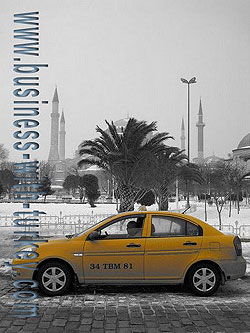
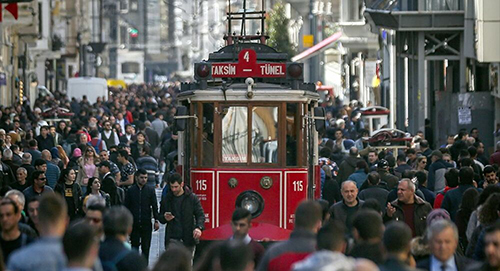
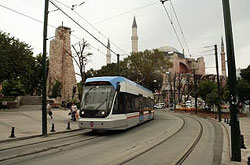
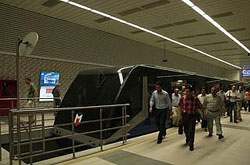
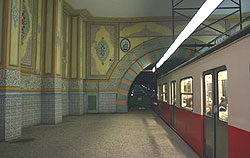


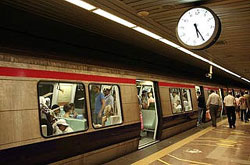
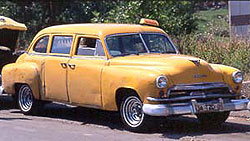
.jpeg)
.jpeg)
.jpeg)

.jpeg)
.jpeg)
.jpeg)